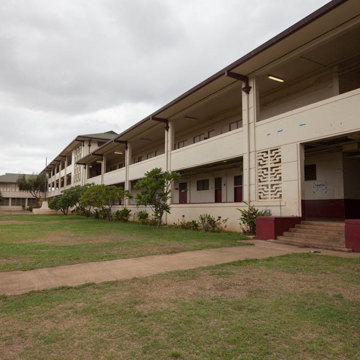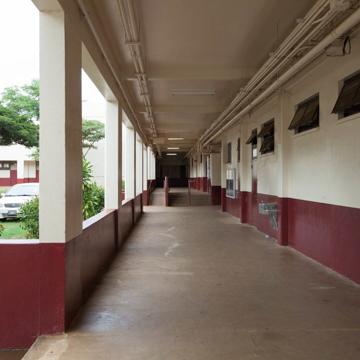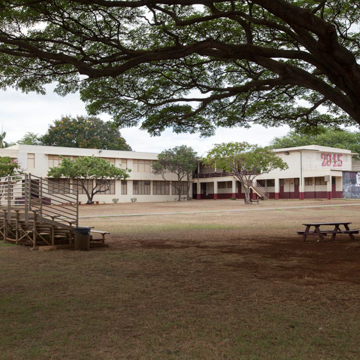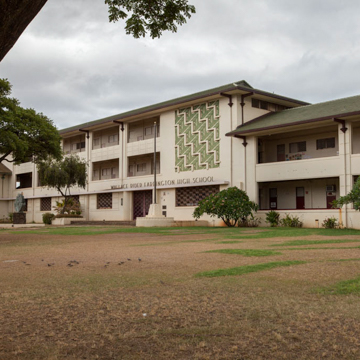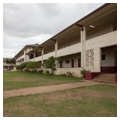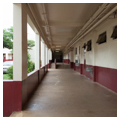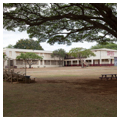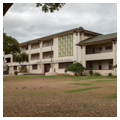Partially funded by the Public Works Administration (PWA), Wallace Rider Farrington High School was built at a turning point in public education in Hawaii. As a result of legislation raising the minimum employment age and a surplus of labor on the sugar plantations, the period between 1920 and 1940 witnessed an explosion in the public school population. Between 1920 and 1930, the number of pupils in grades 7 to 12 grew from 4,719 to 19,700, and during the next eight years, the number of students enrolled in grades 10 to 12 rose from 4,905 to 12,716. Initially, there was some resistance to expanding the public school system; however, those who believed a strong secondary education program would favor Hawaii's chances of statehood made the compelling argument.
The school was started in 1936 in response to the decision to better address secondary school needs in the territory. It was housed across N. King Street from the school's present location in the former Kamehameha Girls' School (OA2.1) until the present reinforced-concrete building was constructed. The well-designed school is one of the few public buildings to adopt the contemporary, progress-oriented Moderne style, albeit in a modest manner. The pavilion-shaped building, with its low-pitched hipped roof, dynamically and asymmetrically flows from a three-to a two-story mass with a left-of-center entrance penetrating through the core of the building to the courtyard beyond. A second- and third-story zigzag concrete relief over a patterned first-story metal grille adds visual interest. Stylized tropical leaves and wavelike designs on the courtyard side provide further ornamentation. The single-loaded hallways form wide lanai on the upper floors, and allow for well-ventilated classrooms. In 1958, wings were built perpendicular to the original wings, almost enclosing the courtyard area. The twenty-six-acre campus now contains seventeen buildings which are sited in a semicircle behind the original high school building.
From 1920 to 1924, C. W. Dickey was the supervisory architect for the Oakland school system in California, designing almost thirty schools in that city. Other Dickey-designed schools in Hawaii include the Wailuku Elementary School (MA15, with Edgar Allen Poe Newcomb), the former Maui High School (1921) in Hamakuapoko, and Kamehameha Schools (OA2).


